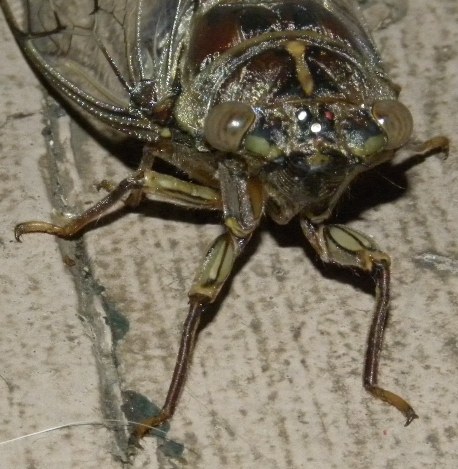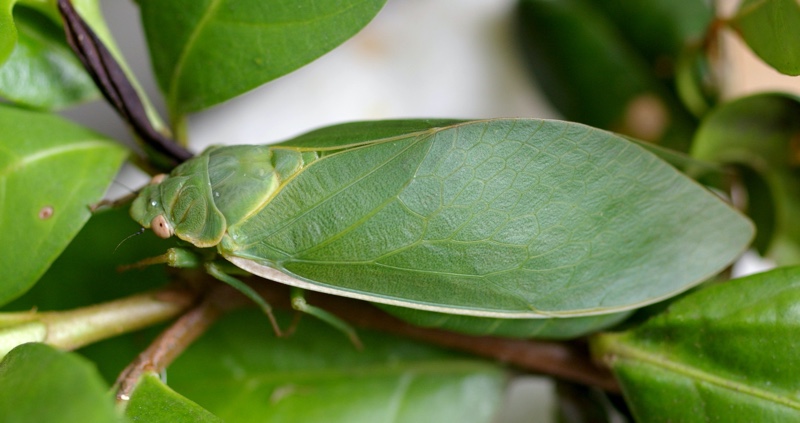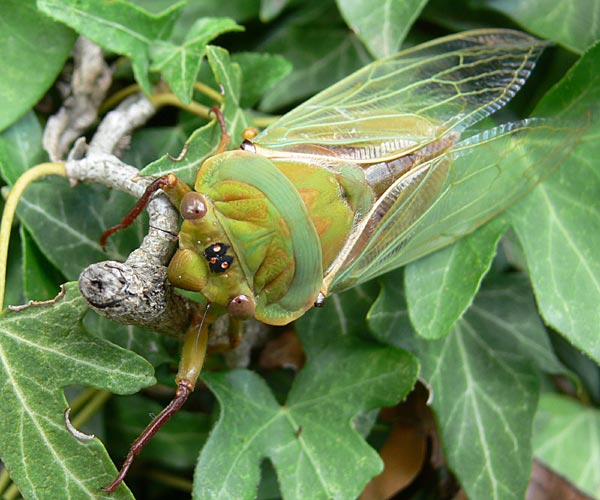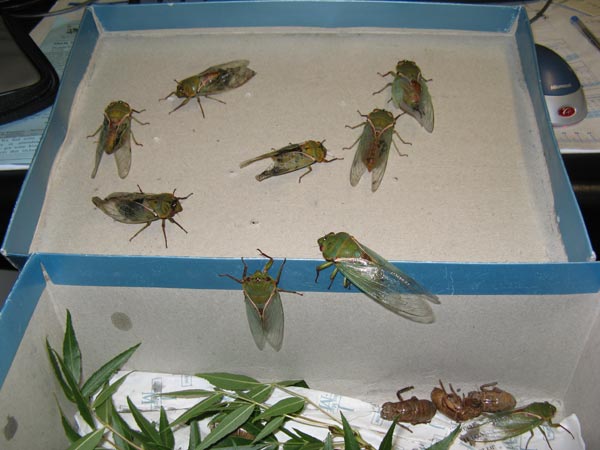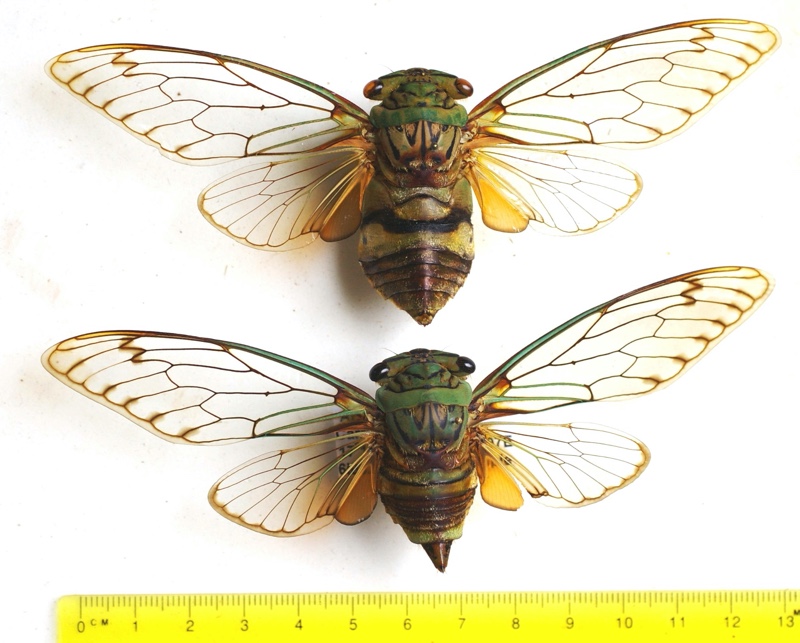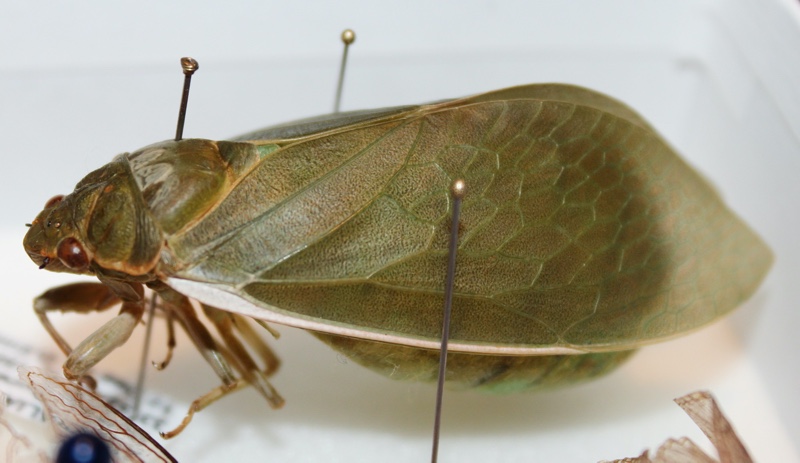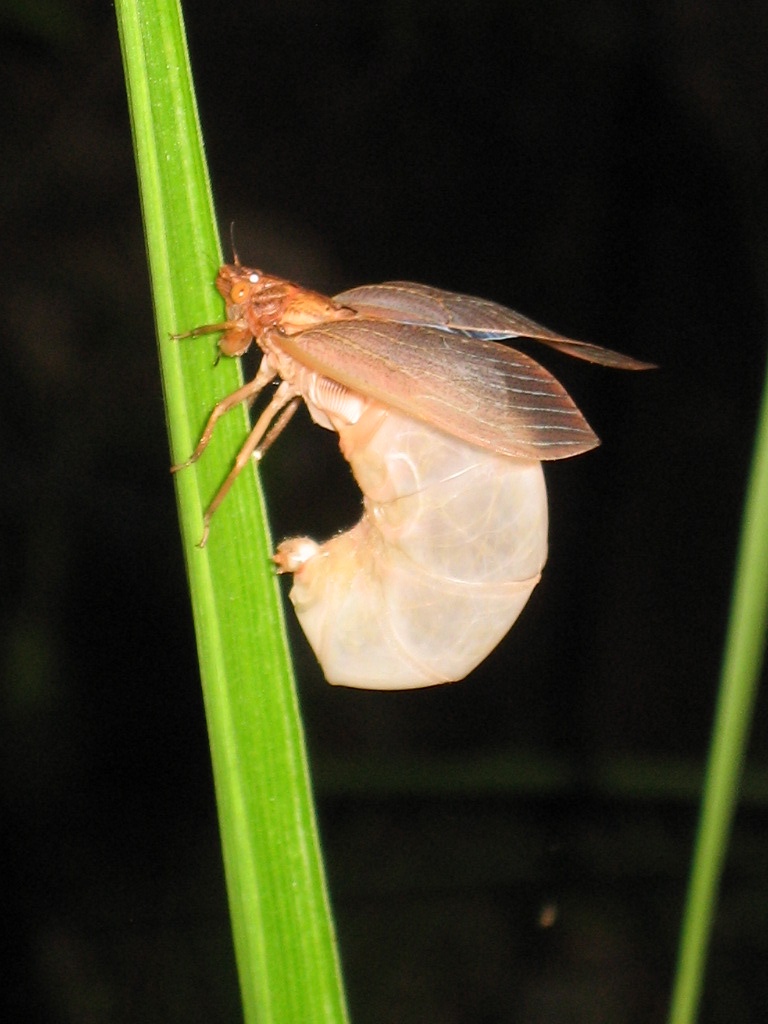Can you identify this Australian cicada??? The photo was take by Elizabeth Barnett.
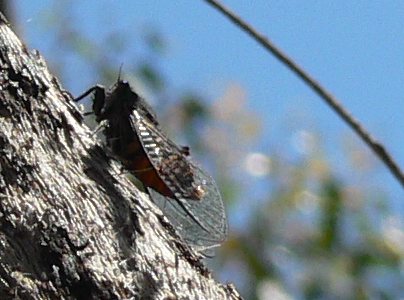
Hi, I wondered whether you can help me identify a cicada we saw at Hall’s Gap (Midwest Victoria, Australia) in January this year? It had a limited tolerance for being photographed and took off asap. From memory its call was a sort of short “eck! eck!” rather than the continuous shrill you get from a greengrocer. There were heaps of them calling but this was the only one we saw. I’d estimate it was about half the size of a greengrocer.
I asked David Emery, and he said:
Looks pretty close to Pauropsalta mneme (Alarm clock ticker) with the orange belly and wing infuscations and is in the right place! Heard the first C.celis around Sydney last week, but very dry at present.
After a Google search for Pauropsalta mneme I’d say David was correct.
The Pauropsalta mneme can be found in south-eastern NSW, Victoria, and a small pocket in South Australia, from late September to early January. (Moulds, M.S.. Australian Cicadas Kennsignton: New South Wales Press, 1990, p. 131.)

